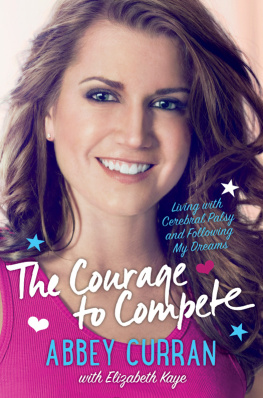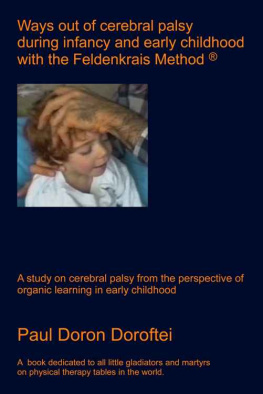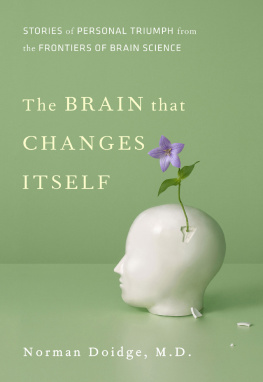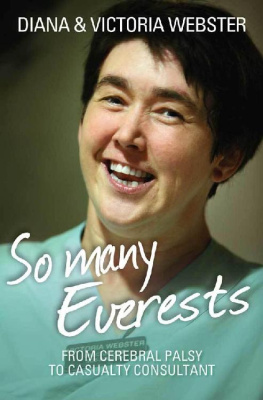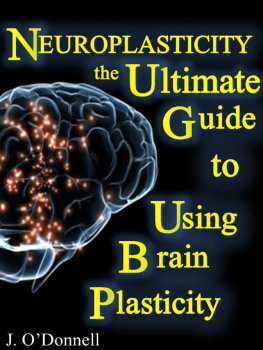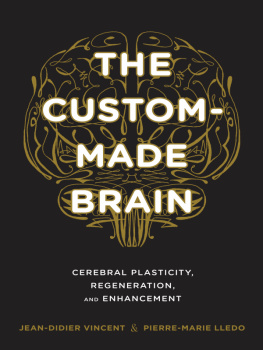In this groundbreaking book, Dr. Karen Pape tells the story of how some children with early brain damage astounded everyone around them. The brain injury they suffered at or near birth had led to motor problems such as the awkward gait we associate with cerebral palsy. Yet they were able to run, kick a soccer ball, tap dance, and play tennis. This was not supposed to happen. It ran counter to the prevailing belief that the brain is hardwired and fixed. When Dr. Pape first shared her remarkable findings, she ran into fierce opposition from mainstream medicine. Yet this courageous neonatologist didnt back down.
In her clinical practice, Pape helped many young brain-damaged children to significantly improve their movement. It led her to ask why some of them could run but not walk with the same ease. Her answer was astounding: By the time they learned to run, their brains had healed. The awkward walking gait was actually a bad habit acquired while the brain was still damaged.
This is the power and the beauty of neuroplasticity, the brains amazing ability to change and heal. It has revolutionized the treatment of adults who suffer stroke. Now, for the first time, this remarkable book shows that children with a brain injury at or near birth can get better, too. These stories of childrens recovery and improvements are a revelationsurprising, inspiring, and illuminating. They offer real hope for some of the worlds most vulnerable children and a better understanding of how the baby brain grows and recovers.
advance praise for
The Boy Who Could Run But Not Walk
This book is chock-full of cases of children with cerebral palsy who vastly exceed their physicians expectations, as well as practical advice for parents and caregivers on how this can be done. Karen Pape, MD, is a pioneer, rightly demanding that colleagues integrate the new science of brain plasticity as it applies to these children, and this is her cri de coeur, recording not only the new breakthroughs, but effectively explaining why, tragically, so many families are still denied these important interventions.
Norman Doidge, MD, author of The Brains Way of Healing
and The Brain That Changes Itself
Full of wisdom, deep scientific and medical understanding, wonderful practical advice, and justified hope.
Michael Merzenich, PhD Professor Emeritus, UCSF, author of Soft-Wired,
and winner of the 2016 Kavli Prize for Neuroscience
An affirmation of the life-changing benefits of neuroplastic healing and some powerful lessons for life.
Jay Greenspan, MD, MBA, Neonatologist, Pediatrician-in-Chief,
A.I. DuPont Hospital for Children
The breakthrough book of a generation for brain change and a real blueprint of hope.
Cynthia Frisina, Founder, Reaching for the Stars, Atlanta, GA
Accessible insights into breakthroughs in the understanding of neurological deficits in children, and exciting additions to the repertoire of available treatment methods.
Warwick J. Peacock, MD, Director of the Surgical Science Laboratory at UCLA,
Professor Emeritus Neurosurgery, UCSF
Never before has a book been written that so effectively marries science and story to help parents understand how they can improve their childs potential.
Professor Iona Novak, PhD, Head of Research, Research Institute,
Cerebral Palsy Alliance, The University of Sydney, Australia
Dr. Papes recognition of this potential of the brain as it can be reflected in improved movement after brain damage, when the important authorities in medicine and neuroscience research strongly held the opposite belief, is a signal achievement and testament to her intellectual courage.
Professor Edward Taub, PhD, Director, CI Therapy Research Group
and Taub Training Clinic, Birmingham, AL
As an adult with cerebral palsy, I kept yelling, YES! YES! as I read The Boy Who Could Run But Not Walk. Finally, a book written by a doctor who gets it when it comes to cerebral palsy treatment.
John W. Quinn, author of Someone Like Me: An Unlikely Story of
Challenge and Triumph Over Cerebral Palsy
An amazing book that proves habit hides recovery. It can be done; it doesnt matter what the disability. A good therapist, parent, or a sports coach can train a patient like an athleteto achieve an optimal level of performance.
Karen Orlando, BSc, PT, Diploma Sport Physiotherapy, and member
of the Canadian Olympic and Paralympic medical teams
A brilliantly insightful, contemporary, must-read on the practical applications of basic neuroscience discoveries.
Elizabeth Theriault, PhD, Vice President Research and Informatics,
Ontario Brain Institute
This book has changed my expectations of what a child with brain injury can accomplish, and the results are truly astonishing.
Pia Stampe, PT, DPT, Step by Step Pediatric Therapy Center, Rochester, NY
A wonderful journey through Papes career and scientific philosophy of neuroplasticity. Revelatory. Her greatest revelation may be that habits hide recoverypoor motor strategies adopted by an injured nervous system may preclude further improvements possible in a more mature or recovered nervous system.
Keith Tansey, MD, PhD, Professor, Departments of Neurosurgery
and Neurobiology, University of Mississippi Medical Center, and
President-Elect, American Spinal Injury Association
Refreshing and energizing! The Boy Who Could Run But Not Walk leads us on a journey not only of hope, but of action.
Suzanne Davis Bombria, PT, C/NDT, Coordinator-Instructor, CT
Read this book. Dr. Karen Pape offers us the benefit of her remarkable and at times frustrating journey as a neonatologist who would not allow her own unorthodox understanding of the nervous system to be swallowed by conventional medical practices.
Harris A. Gelbard, MD, PhD, Director, Center for Neural Development
and Disease, University of Rochester Medical Center, and
Wendy B. Gelbard, MD, Associate Vice President Student
Affairs, Rochester Institute of Technology
Finally, hope can be passed on to the masses of parents and individuals needing to train smarter and pursue great therapies with success. This book will change lives.
Ross Lilley, Executive Director/Founder, AccesSportAmerica, Boston, MA
A solid education in brain injury recovery for the layperson, reminding parents to re-think what they have been told about their childs prognosis.
Deb Discenza, Founder, CEO, Publisher, Preemie World, LLC
The potential for improvement, and even cure, for children with CP and other forms of brain injury appears to be grossly under exploited. The Boy Who Could Run But Not Walk offers genuine hope for all parents of at risk and diagnosed children with cerebral palsy.
Drew Smith, PhD, Director, Motion Analysis Research Center,
Samuel Merritt University, Oakland, CA
Dr. Karen Pape challenges the can't do attitudes surrounding traditional treatment. As parents, we can do no less.
Ron Dolenti and Hope Caldwell, parents of twin boys with cerebral palsy
Thank you, Dr. Karen Pape, for filling a void for parents who face the vast and intimidating landscape of therapies for children with cerebral palsy. The Boy Who Could Run But Not Walk will be my go-to guide for many years to come.
Shoshana Hahn-Goldberg, PhD, mother of child with cerebral palsy
When my son was 10, the medical field and therapists were unsure and lacking any hope for him to achieve new function or improve. He works out every day, played a whole season of sled hockey, and is more comfortable with his body than he has ever been! An absolute must-read for parents, physicians, and therapists!
Next page


